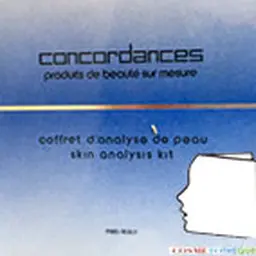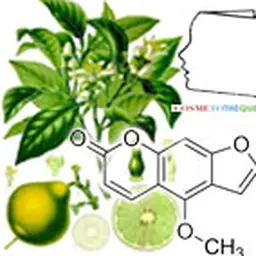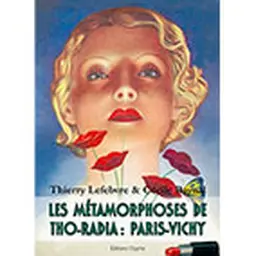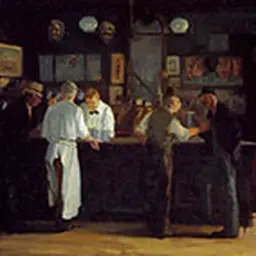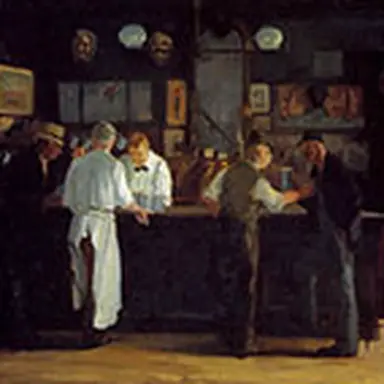
Saul has the blues tonight. He is the last customer at Joes', a bar in Lower Manhattan, and Bronco, the tender bar, would like to close up and go home. But, what do you want, the 240 kg (and maybe a little more, but don't tell Ruth, his wife) of this former New Jersey Heavy Weight champion hides a sentimental soul. So Bronco decided to let old Saul pour out. Today is September 10, 2001, it is 11:12 pm, and tomorrow will be a day like every other day, after all. Then why rush him?
- 90, yeah, three marriages, four kids, and a whole career snorting solvents.
- Solvents, Saul?
- Solvents, perfectly. 75 years of solvents, Bronco.
- How can that be, Saul?
- You see, I got hired at this factory in Newark, on the Passaic River, when I was 15. We were 5 children at home and my father had stopped for good in 1917 somewhere in France during the Great War. A town called Verdun, I think. He never came back. So you had to boil the pot, you see?
The 2m02 of Bronco lean a little more towards Saul : - I understand, Saul. - So, here's the thing. A young guy who couldn't do much except put one foot in front of the other finds himself in this huge factory, surrounded by people of colour, as they say, and surrounded by this smell that never left me again. - Really? What was that? What was that? - Solvents, man, solvents. Esters, we call them. - Okay, what were you doing with it? - You're not gonna believe this….
Bronco elbows to the counter: - But if, go ahead, you know, I heard some in that bar…. - Nail polish, man, hundreds of pounds, thousands of gallons! - Get out of here! - See, I told you you wouldn't believe me…. - No, no, sorry, keep going. - Yes, nail polishes and since the raw material that makes the film on the nail is only soluble in esters, we consumed tons of them ! Literally. - Oh, yeah? What's it called? - Nitrocellulose, man, nitrocellulose.
Bronco serves another shave of Saul's favorite poison: - Okay. And that's all it takes, then, nitrocellulose and esters? - No, no, no, no. Thanks for the bourbon on the rocks. - Last one, huh? - Okay. All right. No, other resins were also needed to give the film body. The funny thing is that we didn't know what to take, so we went to our neighbours who made sucrose and had a by-product they didn't know what to do with. TSFR was called. - TF… what? - TSFR, Toluene Sulfonamide Formaldehyde Resin, to be precise. - Wow, you know things. - 75 years in the business… you learn a little. And, remark, it was practical, that too is soluble in esters. So we tried, it worked, and we still use it today, but less because of the regulations. - Well, you've had a happy hand. - Yeah, back then, it was easy. We mostly made red. The Revlon Red, they called it. Easy to do, stable, brilliant. That's why we've been saying nail polish for so long. But it got complicated afterwards. - Oh, yeah? Why? - Well, they wanted to make the colors brighter. So, we went to see this company in Maine, I believe, that had a fishing fleet and was drawing from the fish scales a super fine and shiny product that went well in our varnishes. - Fish scales, Saul? - Yeah, guanine is called. - Okay, so why does it make things more complicated? - Because they didn't stop there. They created new colours that used other pigments and pearls, things heavier than varnish and no longer floating inside.
Bronco's face suddenly lit up. He was on familiar ground. Didn't he just repaint his entire basement with the help of his brother-in-law? - Yeah, like in the paintings, huh? Everybody knows you have to mix them before you use them, right? - Yes, except that our varnishes are sold in small glass bottles and we can't afford a separation, the customer wouldn't want one. - I understand. Well, all you have to do is make the varnish thicker and it'll float your stuff there. You gotta put more flour in the dough if you don't want the raisins to go to the bottom, right? - That's right, Einstein. And how do you apply it to your nails, your raisin paste, huh? No, we had to find something that made the varnish thick and fluid at the same time. - Mission impossible, then. - Yeah, it took years. And then, in the'60s, they finally found it. - And what, then? - You won't believe me again….
Bronco's two huge hands move away from his body, the two thumbs pointed at his chest: - Try me! - Clay, Bronco, clay. - What? Soil in the varnish? - Yes, but refined and treated. And it's nice because, with that inside, when you don't touch the bottle, the varnish is super viscous and it holds everything in suspension, and then when you shake it, it becomes fluid, you can apply it, and, when it's finished, you put your bottle down and the viscosity goes up by itself like a big one. Magic, right? - Magic, yes. - So we went on for a few years like that and then everything changed again.
Bronco is suffocating a yawn. He's been awake since 5:00 in the morning. Long day… - What do you mean? - The fault lies with the Germans and the Californians. They started talking about how it wasn't good for your health, what you breathed when you applied varnish. Especially for pregnant women. And they said it came from one of the solvents, toluene. - So what? - So it had to be removed. And we liked toluene. It was a great product for making clay gels, Bentone gels, which is called that. It was in 1987, I remember as yesterday, and it took a few years to get rid of it by keeping it, and even improving the quality of the varnishes. - What did you replace it with? - Well, nothing, actually. The proportion of other solvents has been increased. And we worked on dispersion processes to make them more efficient. - Problem solved… - Yeah, except it wasn't over. They removed pigments, added mother-of-pearl with color effects, changed the shade ranges… You see, at first, we had almost no mother-of-pearl. Then no more than 1%. Now we put 5, 10, sometimes 15% mother-of-pearl. And the consumer must not notice anything. But for us formulators, it's a real concern. - Okay, but for you, it's over, right? - Are you kidding? They won't let me go. I have too much experience, they say. Then I'm staying. I guess solvents keep things that way. Come on, I'm going home. Thank you for listening to me all the way.
Saul gets up and puts on his coat. It's cool in the early fall. - No problem. Go home safe and watch yourself. - Oh, you know, I'm quiet, I got an apartment in the World Trade Center. Nothing can happen to us there.
We are now still in Manhattan, September 11, 2001, at 1:32!
Fiction? Of course I do! But it is likely that somewhere in Manhattan there is still a tender bar called Bronco… And that it is true that nail polish formulations have evolved in an extraordinary way over the years, as for all the products in the cosmetic range. It's still the same bottle, the same brush, apparently, and the same smell. But the product has evolved, silently and discreetly, allowing colors, textures that the 1960 Saul could not even dream of. The consumer doesn't know, why would she know? She only sees, and should only see, the improvement in application qualities, hold, gloss, drying time and the widening of the range of colours and textures without having the first idea of the effort it requires formulators. And that's good. And also our pride as formulators… Today, Saul would be surprised to see how Nail Art has invaded the whole space. He would be surprised to know that the product that occupied it for so long has become the main weapon of the"fashion victims", whatever the latitude and in all countries of the world. Thanks, Saul.
| This story was proposed by Eric Wimmer. Since 1980, Éric has served the industry, first chemically, then cosmetically. Doctorate in Chemistry 1979, Doctorate in Physical Sciences 1985, he began his career at Sorgues (Vaucluse) as a synthetic chemist. There, nitrated derivatives led him to become interested in Nitrocellulose, then in the formulation of nail polishes. He subsequently worked in the cosmetics industry in France, the USA and Europe, both in subcontracting companies (Durlin, Tevco, IL Cosmetics) and within brands (Parfums Christian Dior) at several levels of positions, from Operations to the Management of multinational groups, including the setting up and management of Laboratories, activities he continues to perform today. |

